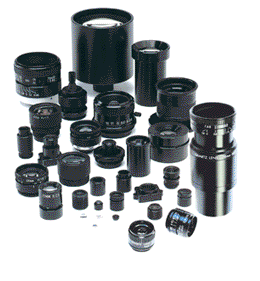High resolution lenses for machine vision — standard and custom lens design
The Benefits Of Thermal Imaging Cameras
High Resolution Lenses for machine vision, instrumentation, inspection and vibration-sensitive applications. Standard and custom hi-res lens assemblies.
With the advent of a new line of low cost thermal imaging cameras and equipment, thermal imaging technology has been found to be an efficient problem-solving, preventative maintenance tool that is used in myriad applications. Most thermal imaging cameras are ergonomic, lightweight and are equipped with high-resolution thermal detectors. These detectors provide valuable information in temperature fluctuations.
A thermal imaging camera operations much the same as a digital camera with the major differentiator being that thermal cameras capture thermal images. The detectors built into the thermal imaging camera capture and measure infrared radiation which it converts to an electrical signal. The electrical signal is converted into a visual representation of the heat an object emits. Cool items are captured and translated in shades of blue. Warm items are captured in shades red. One of the primary features to look for in a thermal imaging camera is the resolution and temperature range at which it can capture images. Resolution matters because all the pixels captured on the screen are a discrete temperature reading; the more pixels, the greater the definition of the image captured. When it comes to temperature range, its specified temperature range limits thermal cameras’ operations. The application for which you will be using the thermal camera will dictate the temperature range your camera will need to operate in.
Many thermal imaging cameras provide additional features such as offering a photographic overlay of the thermal image. The reason for this feature is that it provides the user with detailed images of the components in the proximity to the thermal image being captured. This function is used by building inspectors and in the HVAC industry as a way to pinpoint areas of insufficient insulation, air leaks or moisture pooling. Pest control professionals use thermal imaging cameras to identify areas of infestation within the walls or other enclosed spaces of buildings. The nest areas will display a higher temperature than surrounding areas and will show up on the display. Paranormal investigators also use thermal imaging cameras to capture images during their investigations.
Universe Optics provides high-resolution lenses for machine vision, instrumentation, inspection and vibration-sensitive applications.
